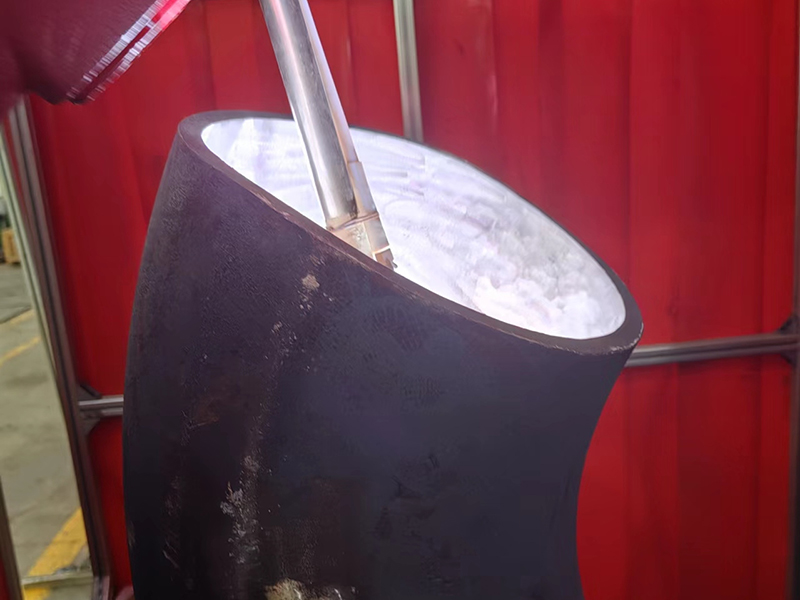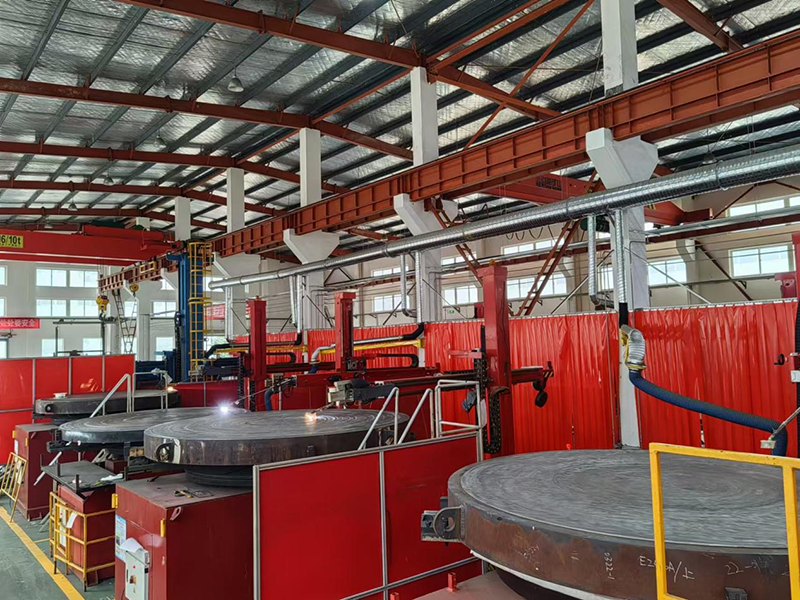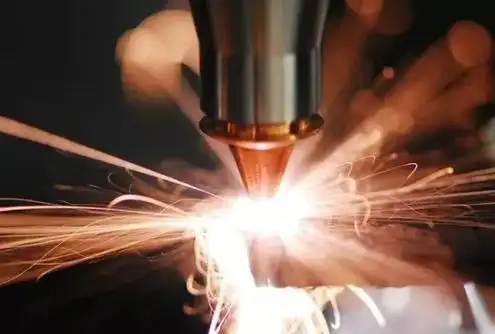What Is the Difference Between Weld Overlay and Hardfacing?
In demanding industrial applications, especially across sectors like oil & gas, mining, power generation, petrochemicals, and pulp & paper, equipment components are constantly exposed to harsh environments. These can involve severe abrasion, erosion, impact, high temperatures, and various forms of corrosion (e.g., acidic media, H₂S, seawater, chlorides). To significantly extend service life, minimize downtime, and enhance operational performance, advanced surface engineering techniques such as weld overlay and hardfacing are indispensable.
While both are metallurgical processes involving the deposition of weld metal onto a substrate, it’s crucial to understand their relationship and distinct primary purposes. Hardfacing is, in fact, a specialized form of weld overlay. The broader term weld overlay encompasses various applications where a new metal layer is applied by welding, while hardfacing specifically focuses on creating a wear-resistant surface.
This article by FNS Pipeline, a leading expert in surface engineering, will clarify these distinctions, delve into their specific use cases, discuss the tailored materials and processes involved, and guide you on choosing the optimal solution for your critical industrial assets.

The 90-degree overlay cladding elbow produced by FNS
1.Weld Overlay (Cladding): The Broader Spectrum of Surface Enhancement
Weld overlay, often referred to as cladding or corrosion-resistant alloy (CRA) overlay, is a versatile metallurgical process where one or more layers of weld metal are deposited onto the surface of a base material (typically carbon or low-alloy steel). The primary goal is to enhance the surface properties of the component, such as corrosion resistance, high-temperature resistance, erosion resistance, or even to restore dimensions.
1.1 Metallurgical Principle and Core Purpose
The essence of weld overlay lies in creating a strong metallurgical bond between the deposited material and the base metal. For most weld overlay applications, particularly those aimed at corrosion or high-temperature resistance, the process aims for very low dilution (typically less than 5-10%). This minimal dilution ensures that the deposited alloy retains its intended chemical composition and inherent resistance properties, preventing the base metal from diluting the overlay and compromising its performance.
Primary Purposes of Weld Overlay:
Corrosion Protection: Shielding the base metal from aggressive chemical environments.
High-Temperature Protection: Enhancing resistance to oxidation, sulfidation, and creep at elevated temperatures.
Erosion Resistance: Protecting against material loss due to fluid or particle impingement (though hardfacing often specializes here).
Dimensional Restoration: Building up worn surfaces to original specifications.
1.2 Common Materials for Weld Overlay (Based on Specific Goals)
The choice of overlay material is critical and depends entirely on the specific environmental challenge. FNS Pipeline utilizes a wide range of certified high-performance alloys for various weld overlay applications:
For Corrosion Resistance (CRA Overlay):
Nickel-based Alloys: Such as Inconel 625 (UNS N06625) for excellent resistance to a broad spectrum of corrosive media including chloride stress corrosion cracking and sour gas; Inconel 825 (UNS N08825) for sulfuric and phosphoric acids; Hastelloy C-276 (UNS N10276) for highly aggressive reducing and oxidizing acids.
Stainless Steels: Including 316L (UNS S31603) for general corrosion resistance; 347 (UNS S34700) for improved intergranular corrosion resistance in weld heat-affected zones; and Duplex Stainless Steels (e.g., 2205 – UNS S31803/S32205, Super Duplex 2507 – UNS S32750) for combined strength and superior pitting/crevice corrosion resistance in chloride-rich environments.
For High-Temperature Resistance: Alloys designed for oxidation stability, creep strength, and thermal fatigue resistance, often including nickel-based or high-chromium alloys.
For General Wear & Impact: Specific carbide-rich or cobalt-based alloys for abrasion, erosion, and impact.
1.3 Key Processes for Weld Overlay (Versatile Application)
The selection of welding process for weld overlay is crucial for achieving optimal metallurgical bond, minimal dilution, and desired deposition rates. FNS Pipeline employs advanced, often automated, welding systems, adapting the process to the specific overlay material and application:
Submerged Arc Welding (SAW): High deposition rates, ideal for large, flat or cylindrical surfaces (e.g., pressure vessel internals, large diameter pipes).
Gas Tungsten Arc Welding (GTAW/TIG): High precision, very low dilution, excellent control. Suitable for smaller areas, complex geometries, and high-quality applications requiring minimal dilution.
Electroslag Cladding (ESC): Very high deposition rates, extremely low dilution (as low as 1-3%), results in a very smooth surface finish. Ideal for large surface areas.
Plasma Transferred Arc (PTA) Welding: High energy density, precise control, very low dilution, excellent for intricate parts and can deposit a wide range of both corrosion-resistant and wear-resistant (hardfacing) alloys.
Laser Cladding: Extremely low dilution, very fine microstructure, minimal heat input. Used for high-precision, high-performance applications, often with intricate geometries.

Flange surfacing equipments
2.Hardfacing: A Specialized Weld Overlay for Wear Protection
Hardfacing is a distinct and highly specialized application within the broader category of weld overlay. Its singular focus is to significantly improve a component’s resistance to various forms of mechanical degradation, including abrasion (sliding, grinding), erosion (fluid, particle impingement), impact, and metal-to-metal wear (galling, friction). It involves depositing weld metal specifically formulated to create an extremely hard and wear-resistant surface.
2.1 Metallurgical Principle and Core Purpose
Hardfacing materials are engineered to form very hard microstructures, typically characterized by the presence of hard phases such as carbides (e.g., chromium carbide, tungsten carbide), nitrides, or borides, often dispersed within a tougher metallic matrix. The goal is to maximize surface hardness and wear resistance. While dilution control is still important to maintain the desired properties of the hardfacing layer, the acceptable dilution rate can sometimes be higher than for corrosion-resistant overlays, depending on the specific hardfacing alloy and the required properties (e.g., balancing hardness with toughness for impact resistance).
Primary Purpose of Hardfacing: To provide unparalleled wear protection and extend the service life of components directly exposed to mechanical forces and abrasive environments.
Key Benefit: Transforms standard, structurally sound components into highly wear-resistant parts at a fraction of the cost of manufacturing from solid wear-resistant alloys. It’s also a critical technique for component repair and reclamation, restoring worn parts to service.
2.2 Common Hardfacing Materials
The selection of hardfacing alloy is paramount and depends critically on the specific wear mechanism and operating conditions (temperature, impact loads). FNS Pipeline offers a comprehensive range of hardfacing solutions:
Chromium Carbides (CrC):
Typical Alloys: Fe-Cr-C based.
Properties: Excellent resistance to severe abrasion and erosion from particles, slurries, or bulk materials. Forms hard primary carbides.
Applications: Crusher hammers, mill liners, excavator bucket teeth, conveyor screws, cement mill rollers.
Tungsten Carbides (WC):
Typical Alloys: Often Ni or Co matrix with embedded WC particles.
Properties: Superior hardness and extreme abrasion resistance, especially for very fine particle abrasion or high-stress grinding wear.
Applications: Drilling tools, mixing paddles, pump impellers for highly abrasive slurries, ground-engaging tools.
Cobalt-based Alloys (Stellite Series):
Typical Alloys: Stellite 1, 6, 12 (Cobalt-Chromium-Tungsten alloys).
Properties: Excellent combination of wear resistance (abrasion, erosion, galling), good corrosion resistance, and high-temperature strength. Retains hardness at elevated “red heat” temperatures.
Applications: Valve seats and stems, pump sleeves, hot shear blades, turbine components operating in corrosive and high-temperature wear conditions.
Nickel-based Alloys: Can be formulated for wear resistance in corrosive environments where both properties are needed.
Tool Steels & Martensitic Alloys: Used for specific applications requiring a balance of hardness, toughness, and cutting ability.
2.3 Key Processes for Hardfacing (Optimized for Wear Properties)
While many welding processes can be used for hardfacing (similar to general weld overlay), the parameters and consumables are specifically tuned to achieve optimal wear properties.
Open Arc Welding (FCAW-S – Flux-Cored Arc Welding – Self-Shielded): High deposition rates, versatile, often used for large-area hardfacing or field applications where portability is key.
Plasma Transferred Arc (PTA) Welding: Highly precise, allows for excellent control over dilution and microstructure, ideal for depositing very hard, fine-grained alloys on intricate parts.
Shielded Metal Arc Welding (SMAW/Stick Welding): Simple, portable, good for manual application and localized repairs with a wide range of specialized electrodes.
Gas Metal Arc Welding (GMAW/MIG/MAG): High deposition rate, continuous wire feed, versatile for various hardfacing alloys, often automated for consistent application.
Laser Hardfacing: Offers extremely low heat input and dilution, leading to finer microstructures and minimal distortion, particularly for thin layers or heat-sensitive components.

laser hardfacing
3.Weld Overlay vs. Hardfacing: A Detailed Technical Comparison
While both are surface engineering techniques involving weld deposition, their distinct primary objectives lead to critical differences in material selection, process control, and resulting properties.
| Feature | Weld Overlay (Broader Term / Corrosion-focused) | Hardfacing (Specialized for Wear) |
| Relationship | Broader category of depositing weld metal for surface enhancement | A specialized type of weld overlay, specifically for wear resistance |
| Primary Function | Corrosion resistance, Chemical attack, High-temperature protection, Erosion (general), Dimensional Restoration | Specific wear resistance (abrasion, erosion, impact, metal-to-metal) |
| Key Material Property | Chemical composition stability, corrosion resistance, high-temp strength | Extreme hardness, presence of hard phases (carbides, etc.), toughness |
| Typical Materials | Nickel-based CRAs (Inconel, Hastelloy), Stainless Steels (316L, Duplex), High CRAs | Chromium Carbides, Tungsten Carbides, Cobalt-based alloys (Stellite), Tool Steels |
| Typical Hardness | Primarily chosen for chemical properties, not necessarily hardness. (e.g., HRC 15-35 for CRAs) | High hardness (e.g., HRC 30-70+), optimized for mechanical wear |
| Typical Dilution Rate | Crucially low (typically < 5-10%) to maintain CRA properties | Low to moderate (can vary based on alloy and desired impact resistance) |
| Typical Thickness | Generally thicker (2-10 mm or more, often multi-layered) for full protection of critical surfaces | Generally thinner (1-5 mm), focused on localized wear areas, or thicker for severe wear/rebuilding |
| Key Metallurgical Goal | Preserve alloy chemistry, ensure metallurgical stability, prevent sensitization | Form and distribute hard phases, achieve desired microstructure for wear resistance |
| Post-Weld Heat Treatment (PWHT) Considerations | Often required to relieve residual stresses and ensure metallurgical stability, especially for sensitive CRAs or thick sections | May be required depending on base metal and hardfacing alloy to prevent cracking, optimize properties, or relieve stress |
| Surface Finish | Often requires machining/grinding to achieve a smooth finish for flow characteristics or sealing | Can be left as-welded or ground, depending on application’s wear mechanism and required tolerance |
| Industry Standards (Examples) | API RP 582, NACE MR0175/ISO 15156 (for sour service), ASTM G48 (pitting/crevice corrosion), ASTM A262 (intergranular corrosion) | ASTM G65 (abrasion), ASTM G105 (slurry erosion), ASTM G76 (erosion), specific industry best practices for wear testing |
4.Strategic Selection: Choosing the Right Surface Engineering Solution
Choosing between weld overlay and hardfacing depends on the primary degradation mechanism your component faces:
If the main problem is corrosion (e.g., H₂S, acid, seawater, chloride stress): → Use Weld Overlay
If the main problem is wear or abrasion (e.g., from particles, slurry, contact stress): → Use Hardfacing
In some complex cases (e.g., corrosive + abrasive environment), a hybrid solution may be required: using corrosion-resistant overlay followed by hardfacing in critical zones.
5.FNS Pipeline: Your Trusted Partner in Advanced Surface Engineering Solutions
With over 20 years of profound experience in advanced surface engineering, FNS Pipeline stands as a global leader in providing high-performance weld overlay and hardfacing solutions for critical industrial assets. Our commitment to innovation, precision, and unwavering quality makes us the preferred partner for the most challenging industrial applications.
Contact us today for a custom solution to your surface engineering problem!


